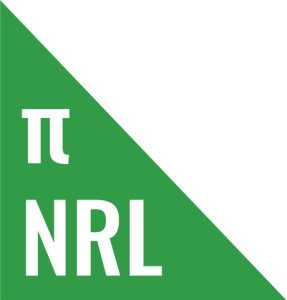People familiar with my philosophy will know that I put less stock in wins than most people. The binary nature – you either take everything or get nothing – means that a simple win-loss record is not a particularly nuanced and, unless you have a very long timeframe to work with, doesn’t necessarily reflect teams’ actual talent over shorter timeframes. Points difference and by extension, Pythagorean expectation, does a better job of reflecting true team ability but even that can be affected by luck or odd results. Does a 50-0 scoreline really tell you any more than a 30-0 scoreline about the relative disparity in talent? If a team scores more tries but loses the game, what does that tell you?
Baseball and college football analysts have developed a metric called “second order wins“. The actual win-loss record are considered to be zeroth order wins (nomenclature that I use and probably no one else). Pythagorean wins, the number of wins expected based on the team’s Pythagorean expectation, are considered first order wins. Second order wins calculates a Pythagorean expectation, not based on actual points scored, but utilising advanced stats to calculate expected points. The idea is that these expected points are more repeatable, and less subject to good/bad luck, and provide a less wrong basis for estiamting teams’ true talent and forecasting teams’ performances on that basis.
For use in rugby league, I propose the following hierarchy:
- 0th order wins – actual wins
- 1st order wins – wins as calculated by Pythagorean expectation of points for and against
- 2nd order wins – wins as calculated by Pythagorean expectation of SCWP (Should-a Could-a Would-a Points) for and against
Note that third order wins are second order wins adjusted for strength of schedule. I’m not really concerned with this right now, given that everyone in the NRL plays each other once and then mostly twice so it is of marginal value.
SCWP is not what I would call an advanced statistic because there’s only so much I can do with the data I have. I have taken two metrics for rugby league – metres gained, representing field position, and line breaks, representing playmaking – as our key statistics on which to estimate expected points. I briefly toyed with including tackle busts but it did not improve performance and I suspect we would get a similar result with other stats.
In a similar process to building up the Taylors system, I took every NRL game (2013 – 2021 rd10), QCup (2016 – 2021 rd 7), NSW Cup (2016 – 2021 rd 10) and Super League (2017 – 2021 rd 5) and calculated the running metres and line breaks for each team in each game. I put these games into buckets and then calculated the average score for the bucket with a minimum of five games. The net result is a near 1:1 relationship between metres/line breaks and points scored.
The trendline for these graphs allows us to calculate the Should-a Could-a Would-a Points (i.e. the expected points) that we would expect the team to have scored given the metres and breaks made. We take the (basically) average of the points expected by metres and the points expected by breaks, resulting in the SCWP for the game.
The question then might be, why? The 2nd order winning percentage, based on SCWP, has a lower mean absolute error (MAE) when compared to next year’s actual winning percentage than 0th or 1st order winning percentage. Over the 2013 to 2020 NRL, 2016 to 2019 state cup and 2017 to 2020 Super League seasons (n = 221), we find:
- 0th order winning percentage has a MAE of .149 when compared to next season’s winning percentage (equivalent to 3.6 wins over a 24 game schedule)
- 1st order winning percentage has a MAE of .132 (3.2 wins)
- 2nd order winning percentage has a MAE of .122 (2.9 wins)



Each iteration lowers the error by 10% when forecasting. There’s an additional layer of linear regression that could be applied over the top and this might replace the now defunct Poisedon ratings in pre-season sims.
The decreasing error is partly due to an in-built regression to mean, as SCWP typically has a lower margin than actual points which reflects the fact that teams always put in some effort, even when they get shutout on the scoreboard, and partly because SCWP reflects repeatable statistics, whereas the scoring of actual points can be somewhat prone to randomness (“we would’ve won that if he hadn’t dropped the ball three times/missed those conversions”, hence the name).
The current state of SCWP in the NRL (round 11), compared to actual for-against:

For Super League (round 6):

For Queensland Cup (first part of round 8):

For NSW Cup (round 11):

There’s an additional layer of efficiency to consider. I don’t know if the ratio between actual points scored and SCWP will prove meaningful but if a team is consistently outscoring what we would expect considering the fundamentals, that might either give us a clue about their style of play or it might signal regression to mean. This is something to keep an eye on.
There’s every chance that a SCWP v2 might come forward in the future, based on actual advanced statistics. I of course reserve the right to tinker with my own systems but I’ll let you know when I do.









